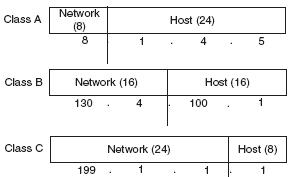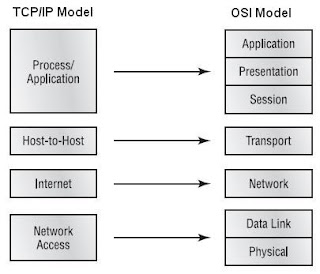In 1984, the International Organization for Standardization (ISO) developed
the OSI Reference Model . OSI model is used to describe how information is
transferred from one networking component to another network component.
OSI (Open System Interconnect) model separates the
network communication process into seven layers, each layer has a different
but specific processing function. application Layer (layer 7),
Presentation Layer (layer 6), Session Layer (layer 5), Transport Layer (layer
4), Network Layer (layer 3), Data Link Layer (layer 2), Physical Layer (layer
1).
* Application, Presentation and Session layer call as "Upper Layer OR
software Layer"
* Transport layer call as "heart of OSI model"
* Network, Data link and Physical layer call as "Lower Layer OR
Hardware Layer"
Devices and Protocols
Layer7: Application Layer
The seventh layer , or topmost layer, of the OSI
Reference Model is the application layer, it is a responsible for providing
network services to the users, it is also called as Desktop layer,
Identification of all services done by using Port Numbers.
* Total No Of Port (0 to 65535)
* Reserved Port (0 to 1023)
* Open Client Port (1024 to 65535)
Layer6: Presentation Layer
The six layer , of the OSI Reference Model is the
presentation layer, it is a responsible for converting data into standard
format. the presentation layer determines how data is transmitted and
represented to the user.
Example: ASCII, JPEG, MPEG, MP3 etc.
function of presentation layer:
* Encoding and Decoding
* Encryption and Decryption
* Compression and Decompression
Layer5: Session Layer
The fifth layer, of the OSI Reference Model is the
session layer, the session layer is responsible for initiating the setup
and teardown of connections. the session layer is responsible for setting up,
maintaining and tearing down network connections.
Example: RPCs ( Remote Procedure Calls), NFS ( Network File System) and SQL(
Standard Query Language ).
Layer4: Transport Layer
The fourth layer, of the OSI Reference Model is the
transport layer,it is a heart of OSI layer, it is responsible for end to
end connectivity. Transport Layer provides a variety of services between two
host computers, including connection establishment and termination, flow
control, error recovery, and segmentation of large data blocks into smaller
parts for transmission.
Following task are performed in this layer:
* Identifying Services.
* Multiplexing and De-multiplexing
* Segmentation
* Sequencing and Reassembling
* Error Correction
* Flow Controls
* Windowing
Layer3: Network Layer
The third layer, of the OSI Reference Model
is the network layer, it is responsible for providing best path for data to
reach the destination. logical addressing works on this layer, router and
layer 3 switch are network layer devices.
Function of Network layer:
* Defines logical addresses used at layer3.
* Find best path, based on the network numbers of logical addresses, to
reach destination components
* Connects different data link layer types together, such as Ethernet,
fiber distributed data interface (FDDI), Serial, and Token Ring.
In this layer two type of protocol used:
>> Routed Protocol
ex. IP, IPx, Apple Talk
>> Routing Protocol
ex. RIP, IGRP, OSPF, EIGRP
Layer2: Data Link Layer
The second layer, of the OSI Reference Model
is the data link layer, it provides for logical addresses for
components, the data link layer provides for physical, or hardware addresses
(MAC). Formats data into frames appropriate for transmission onto some
physical medium. Defines rules for when the medium can be used. Defines means
by which to recognize transmission errors.
Data Link Layer divided into two sub layer:
>> LLC ( Logical Link Control ) it is a WAN Protocol
ex. PPP, HDLC, Frame Relay
>> MAC ( Media Access Control ) it is a physical address, it is a 48 bits
address.
Data Link Address Type:
* Unicast --> Represents a single device on a
segment
* Broadcast --> Represents every device on a segment
* Multicast --> Represents a group of devices on a segment
Layer1: Physical Layer
The first layer, of the OSI Reference Model
is the physical layer, it is a responsible for the physical mechanics of a
network connection, data will be connected into Binary 0`s and 1`s, Data will
be in the form of electrical pulse ,if it is coaxial or twisted pair cable.
Defines the electrical, optical, cabling, connectors, and procedural details
required for transmitting bits, represented as some form of energy passing
over a physical medium.
* The type of interface (NIC) used on the networking device
* The type of cable (fiber, coaxial, twisted pair ) used for connecting
devices
*The connection used on each end of the cable.
PDU Terms in OSI Reference Model













